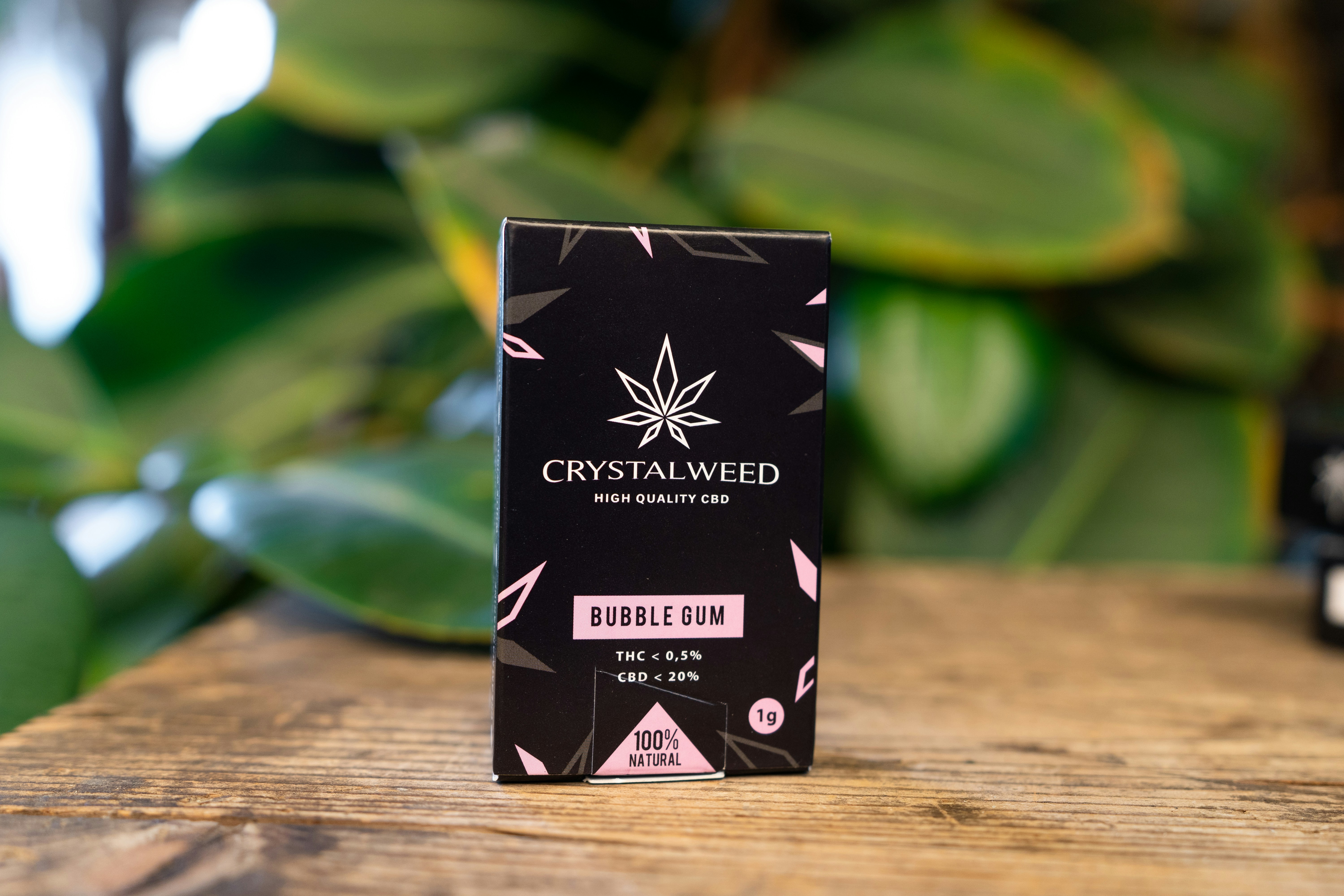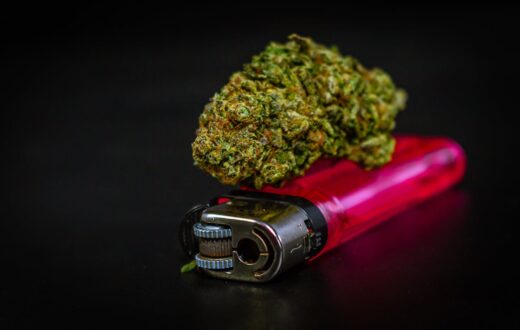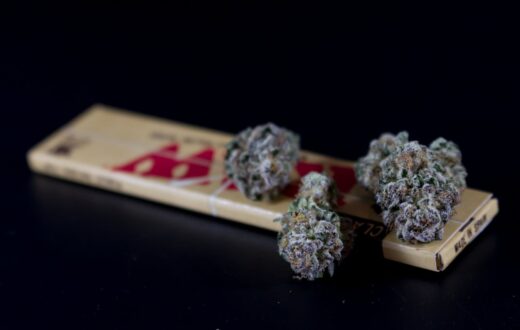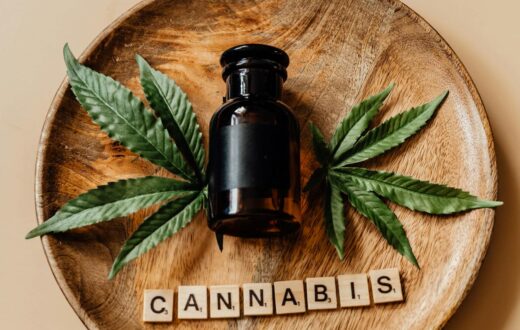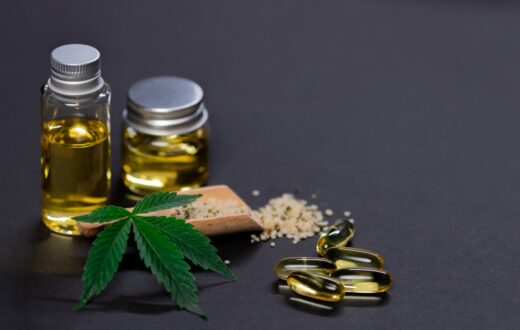Introduction to Bubble Gum Weed Strain
The Bubble Gum weed strain is a popular hybrid that has been captivating cannabis growers and enthusiasts alike since its inception. Originating in the 1970s, this strain is known for its sweet, candy-like flavor reminiscent of the classic bubble gum treat, making it particularly appealing to both recreational and medicinal users. The origins of Bubble Gum can be traced back to Indiana, where cultivators selectively bred various parent strains to develop its unique characteristics. Over the years, its fame has spread globally, with many growers eager to cultivate their own version of this sought-after strain.
One of the standout features of Bubble Gum is its aromatic profile, which is marked by a sweet and fruity fragrance that can make any cannabis garden enticing. When consumed, users often report a pleasant taste that lingers on the palate, further enhancing the overall experience. This strain typically exhibits a balanced cannabinoid content, making it suitable for those seeking both uplifting cerebral effects and soothing physical relaxation. The combination of THC and CBD levels creates an enjoyable high that is both euphoric and calming, catering to a wide range of preferences.
In addition to its delightful flavor and effects, the Bubble Gum strain is renowned for its ease of cultivation. Many growers appreciate its resilience to common pests and molds, making it a great choice even for those who are less experienced. Furthermore, its relatively short flowering time, usually around eight weeks, means that cultivators can enjoy their harvest sooner than with other strains. It is this combination of flavor, effects, and cultivation ease that solidifies Bubble Gum’s reputation in the cannabis community, making it a top choice for anyone interested in how to grow the Bubble Gum weed strain effectively.
Understanding the Growing Conditions
To successfully cultivate the Bubble Gum weed strain, understanding its ideal growing conditions is paramount. This strain generally flourishes in a controlled environment where temperature, humidity, and soil type are carefully managed. Optimal temperature ranges for growing Bubble Gum typically fall between 70°F to 80°F (21°C to 27°C) during the day and slightly cooler at night. Maintaining these temperatures helps to replicate the natural habitat of the plant, promoting vigorous growth and minimizing stress.
Humidity levels play a vital role as well. During the vegetative stage, ideal humidity ranges from 40% to 70%. This level allows the plant to absorb moisture effectively while reducing the risk of mold and pests. However, as the plants enter the flowering stage, decreasing humidity to around 40% to 50% is advisable to support resin production and prevent bud rot. Proper ventilation and air circulation are crucial to achieving these humidity levels and overall plant health.
When it comes to soil, Bubble Gum prefers well-draining, nutrient-rich substrates. A pH level between 6.0 and 7.0 is optimal for nutrient absorption. Utilizing organic soil amendments such as compost or worm castings can enhance soil structure and fertility. Additionally, applying a specific fertilizer blend designed for flowering cannabis can further ensure that these plants receive the nutrients necessary for robust development. To create an environment conducive to growth, consider employing techniques such as using grow tents, ensuring adequate light exposure, and regularly monitoring environmental variables.
By paying attention to these fundamental growing conditions, cultivators can effectively learn how to grow Bubble Gum weed strain with a greater chance of achieving a high yield and healthy plants.
Choosing the Right Seeds
When embarking on the journey of growing the Bubble Gum weed strain, the first critical step involves selecting the right seeds. Various types of seeds are available in the market, including feminized, regular, and auto-flowering seeds. Each option has distinct characteristics that can significantly influence not only the growth process but also the eventual yield.
Feminized seeds are specifically bred to produce female plants, which are the ones that produce the coveted buds. For growers aiming for maximum yield, feminized Bubble Gum seeds are often the preferred choice, as they eliminate the risk of male plants that do not contribute to bud production. Conversely, regular seeds, which can produce both male and female plants, may appeal to those interested in breeding or creating unique strains but require more attention to carefully identify and manage male plants.
Auto-flowering seeds represent another viable option, designed to transition from the vegetative to the flowering phase based on age rather than light exposure. This characteristic makes auto-flowering Bubble Gum seeds ideal for novice growers or those with limited light conditions, as they offer more versatility and a quicker harvest cycle.
It is crucial to acquire seeds from reputable breeders, as the quality of the seeds directly impacts growth rate, health, and yield. Researching trusted sources can help ensure that you receive high-quality seeds that match the specific traits desired in the Bubble Gum strain. Many cannabis enthusiasts share their experiences and recommendations in online forums and communities, making it easier for new growers to make informed decisions. By investing time in understanding the different seed types and their implications, growers can set a solid foundation for successful cultivation of the Bubble Gum weed strain.
Seed Germination and Planting
Germinating Bubble Gum weed strain seeds effectively is crucial for cultivating healthy plants. Several techniques can be employed, with the paper towel method being one of the most popular due to its simplicity and high success rate. To execute this method, start by obtaining quality Bubble Gum seeds and moistening a paper towel. Place the seeds on the towel, ensuring they are spaced apart, and then fold the towel, encasing the seeds. Place the towel in a warm, dark environment, ideally a temperature between 70-80°F (21-27°C). Check the towel daily to ensure it remains moist, and within a few days, you should see the seeds sprouting taproots.
Once the seeds have germinated, it’s time to transfer them to a suitable growing medium. A nutrient-rich, well-draining medium will provide the best environment for the young seedlings. You can choose between soil mixes specifically designed for cannabis or other organic alternatives. Prepare small pots or seed trays filled with the growing medium. Make a small hole in the soil, about half an inch deep, and gently place the sprouted seeds root-side down into the hole. Cover them lightly with soil and gently water to settle the medium around the seedling.
Timing is essential when planting the seedlings. Aim to transplant them into pots or the outdoor garden when they have developed a strong root system and their first set of true leaves appears. This typically occurs around 2-3 weeks after germination. Ensure that the seedlings are not subjected to harsh conditions during their early development phase; maintain consistent moisture and a suitable temperature. Following these guidelines on how to grow Bubble Gum weed strain from seed Germination through planting will provide a solid foundation for healthy plant growth and eventual flowering.
Nutrient Requirements and Feeding Schedule
The Bubble Gum weed strain, known for its sweet aroma and balanced effects, thrives on a carefully managed nutrient regimen throughout its growth stages. Understanding the nutritional needs of Bubble Gum plants can significantly influence their yield and overall health. During the vegetative stage, which typically lasts about 3 to 6 weeks, these plants require a nutrient mix that emphasizes nitrogen (N) to promote healthy leaf and stem development. A recommended nutrient ratio for this stage is 3-1-2 (N-P-K), ensuring that the plants receive adequate nitrogen for vigorous growth alongside phosphorus and potassium for root and overall plant health.
Moving into the flowering stage, which can last 8 to 10 weeks, the nutrient requirements of the Bubble Gum strain shift notably. At this point, reducing nitrogen intake while increasing phosphorus (P) and potassium (K) is crucial for flower development. A commonly recommended N-P-K ratio during flowering is 1-3-4. This adjustment not only supports the formation of dense, resinous buds but also optimizes flavor and aroma profiles, characteristic of the Bubble Gum strain.
Monitoring your plants for signs of nutrient deficiencies or excesses is vital. Nitrogen deficiency can manifest as yellowing leaves, especially at the bottom of the plant, while excess nitrogen can lead to stunted growth and dark green leaves. Similarly, a phosphorus deficiency may cause poor bud development, characterized by dark foliage, while excess phosphorus can result in nutrient lockout. Potassium deficiency is indicated by browning leaf tips. By maintaining an appropriate feeding schedule and being vigilant for these signs, growers can effectively nurture Bubble Gum plants to reach their full potential.
Pruning and Training Techniques
When cultivating the Bubble Gum weed strain, employing effective pruning and training techniques is essential for maximizing yield, enhancing light exposure, and improving airflow throughout the plant. Three commonly utilized methods include topping, low-stress training (LST), and the Screen of Green (SCROG) technique. Each method provides unique benefits that cater specifically to the growth characteristics of this strain.
Topping is a popular method involving the intentional removal of the main shoot’s growing tip. This action encourages the plant to develop multiple main colas, resulting in a bushier structure. For the Bubble Gum strain, topping should ideally be conducted during the vegetative stage, allowing the plant to recover and stimulate growth in the lateral branches. This technique not only improves light distribution but also can significantly increase the overall yield, giving growers more abundant harvests.
Low-stress training (LST) is another valuable technique that involves gently bending and tying down the branches of the plant. This method helps expose lower buds to adequate light while promoting an even canopy. For the Bubble Gum strain, LST allows for an optimized growth environment, as all parts of the plant receive equal light exposure. Moreover, this technique minimizes stress on the plant compared to other training techniques, encouraging healthy growth without the risk of stunted development.
The Screen of Green (SCROG) method is particularly effective for maximizing the yield of the Bubble Gum strain in limited growing spaces. By using a net or mesh screen to guide the growth of the topmost branches, growers can create an even canopy that optimizes light penetration and airflow. This method allows for more efficient use of vertical space and can greatly enhance flower development in lower nodes, ultimately leading to a healthier plant and a more substantial harvest.
Pest and Disease Management
Growing the Bubble Gum weed strain can be a rewarding endeavor; however, it also comes with its own set of challenges, particularly concerning pests and diseases. Gardeners must be vigilant, as Bubble Gum plants can be affected by various nuisances, including aphids, spider mites, and powdery mildew. Understanding how to manage these potential threats is vital to maintaining healthy plants and minimizing crop loss.
Aphids are one of the most common pests that can infest Bubble Gum plants. They are small, soft-bodied insects that feed on the plant’s sap, leading to wilting and stunted growth. A preventive measure to combat aphids includes introducing beneficial insects, such as ladybugs, which naturally prey on these pests. Another effective method is regularly checking your plants for signs of infestation and using insecticidal soaps or neem oil as an organic treatment if necessary.
Spider mites are also prevalent among cannabis growers. They thrive in dry conditions and can cause significant damage to Bubble Gum plants by creating webbing and leading to leaf discoloration. To mitigate this issue, maintaining proper humidity levels and ensuring adequate air circulation can help deter spider mite populations. In addition, applying a mixture of water and dish soap can effectively disrupt their presence.
Powdery mildew, a fungal disease characterized by powdery white spots on leaves, is another concern for Bubble Gum plants. This disease typically flourishes in humid environments with poor ventilation. To prevent powdery mildew, ensure that your grow space has sufficient airflow and avoid overhead watering, which can create moist conditions. Should your plants become affected, removing the infected leaves and applying organic fungicides can help control the spread.
Continuous monitoring and early intervention are essential to protect your Bubble Gum weed strain from pests and diseases. By engaging in regular inspections and adopting preventive measures, you can significantly enhance the resilience of your plants and ensure a healthy and productive growth cycle.
Harvesting and Curing
Harvesting the Bubble Gum weed strain is a crucial step that significantly impacts the quality of your final product. To determine the right time for harvesting, it is essential to observe the plant’s trichomes. They should transition from clear to a milky white color with some turning amber. A good rule of thumb is to aim for around 70% milky trichomes and 30% amber for optimal potency and flavor. This visually indicates that the cannabinoids are at their peak, contributing to the strain’s hallmark sweet and fruity aroma.
Once the desired maturity has been achieved, it is time to carefully harvest the plants. Begin by cutting the branches at the base, ensuring to use sterilized tools to avoid any potential contamination. After cutting, gently hang the branches upside down in a cool, dark, and well-ventilated space. This allows for an effective drying process, which typically takes between 7 to 14 days, depending on ambient humidity and temperature levels.
After the initial drying phase, it is crucial to cure the buds to preserve flavor and potency. Begin the curing process by carefully trimming the buds from the branches and transferring them into airtight containers such as glass jars. Fill the jars to about three-quarters full to allow for some air circulation while preventing excess moisture loss. Opening the jars once daily for a few minutes, known as “burping,” is recommended during the first couple of weeks to release any trapped moisture and enable the buds to breathe. Continue this process for up to four weeks, as this period facilitates the development of enhanced flavors and smoother smoke.
For optimal long-term storage of the Bubble Gum weed strain, maintain a cool, dark environment, ideally using vacuum-sealed bags or airtight jars. This helps to preserve the strain’s potency and flavor profile over time, ensuring that you can enjoy the fruits of your labor long after the harvest.
Conclusion and Final Tips
Successfully growing the Bubble Gum weed strain requires attention to detail and an understanding of the plant’s unique characteristics. Start by selecting high-quality seeds from a reputable source, as the genetic foundation is crucial for a healthy crop. Once you have your seeds, choose an appropriate growing medium, whether it’s soil, coco coir, or hydroponics, as each has its own advantages and challenges. Bubble Gum plants thrive in a controlled environment, so maintaining optimal temperature and humidity levels is essential for robust growth.
During the vegetative stage, ensure consistent watering and feeding while paying close attention to the light cycles. As you transition into the flowering phase, it is vital to monitor nutrient levels, adjusting them to suit the plant’s specific needs. Regularly inspect your plants for pests and diseases to prevent any potential setbacks. Training techniques such as topping and low-stress training can maximize light exposure and improve yields.
When it comes time to harvest, the right timing is critical. Use trichome color as an indicator; milky trichomes generally signal that it’s time to harvest Bubble Gum weed for peak potency. Post-harvest, proper curing can significantly enhance the aroma and flavor profile, making all your hard work worthwhile.
Lastly, consider experimenting with various growing methods and setups to find what works best for your specific environment. Each grower may have different preferences and conditions, so being open to trial and error could lead to improved outcomes. Embrace the journey of learning how to grow the Bubble Gum weed strain, and enjoy the process as you refine your gardening skills along the way.










